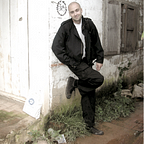The Opposite of Buddhism §6 & §7
Colonialism and Supposedly-Scientific Attitudes
[Reminder: this lecture was written for a Cambodian audience, and intended for translation into Cambodian.]
§6.
While the results of European research are presented as scientistic, the process and purpose of that research has always been guided by values that were neither more rational nor less religious than traditional scholarship within Asia. While an occult movement like Theosophy can claim to be a religion, it cannot claim to be a science; what we see, therefore, is the application of one set of cultural assumptions to another: it is one religion evaluating another --not the application of science to nature.
The scholars who set to work on Buddhism did not arrive like botanists with a blank page and a pencil, hoping to sketch out the tubers and vines of Asia, recording their discoveries just as they found them. Instead, they proceeded from their own religious values to their own religious goals; and, often enough, in the process of studying Buddhism they became religious leaders themselves. Although this sometimes took place for a circle of followers back in Europe, it could also transpire on a larger scale, here in Theravada Asia.
The American author Col. Henry Steel Olcott did more than just write books, and he remains a national hero in Sri Lanka today. Living in what was then the British colony of Ceylon, he grew a long white beard and traveled the countryside giving sermons and practicing “faith healing” (i.e., healing by touch):
"Olcott possessed enormous charisma which was reinforced by his discovery of his capacity to heal the paralyzed and the lame. He attributed these skills entirely to “animal magnetism” and “mesmerism” which for him was a latent capacity in every individual but the thousands who crowded at his door probably thought that he was like one of their own religious specialists, the Kattadiralas.” (Obeyesekere, 1992)
He explained his ability to do this in scientistic terms (“animal magnetism”) not as a miracle; while he may have considered his own values to be scientific, it is fair to observe that his audience (of Sinhalese Buddhists) would have seen him as a traditional religious figure. It is also fair to say that his notions of science are accounted as superstition today.
§7.
Incongruously, the European interpreters are presumed to be “rationalist” in their agenda, in precisely the same terms that Olcott is described as “rationalist” in specific; but what is called “rationalism” in this context is simply the mode of superstition preferred by the European researchers. Certainly, in the recent past, many Europeans thought the existence of the soul was a “rational belief”; however, attempts to prove that Buddhists shared this superstition are, I think, irrational in every sense of the term. Unlike botany, it is the agenda (or guiding motivation) that tends to determine the findings in the Western tradition of the social sciences, especially if the researcher disregards evidence that contradicts the hypothesis (in the manner already described).
The results, however, are packaged and presented as unassailable fact: bound, indexed and footnoted. The simple technology of the book still has a powerful effect on the imagination, in both East and West. People are inclined to be skeptical of faith-healers, but to be uncritical of published authorities.
What is more convincing than a single book, however, is a system of many books, with each affirming the assumptions and speculations found in the others. With the output of all these labors gathered into a library, a reader could encounter one opinion so consistently in every source consulted that it began to seem as if Buddhism was derived from Theosophy, and not the other way around. To quote a publication from the Musée Guimet in 1923: “Buddhism is a theosophy that made itself into a religion. This means that in Buddhism, theosophy adapted itself to a whole other set of conditions, and that its force of action increased exponentially.”1 Elsewhere in the same volume, we are told, “Intellectualist, rational, exempt from mysticism; Buddhism owes these characteristics to its theosophical roots.”2 I imagine that some of the readers of this particular work may have purchased their copies while visiting the world's greatest collection of plundered Cambodian artefacts at the Musée Guimet. The looting of Buddhist philosophy has remained at a rudimentary stage, while the looting of statuary and the decorative arts has become quite advanced.
These theories all had the outward appearance of real philology, establishing historical facts, with the imprimatur of major instititons stamped on the title page. The sources of these misinterpretations were at the very center of power, with the small number of people who established themselves as the editors, interpreters, and custodians of the primary source texts; that formative influence has continued to emanate out from the center to the fringes.
It is no laughing matter when we turn from Theosophy to the construction of Aryan race theory, that is, another (unscientific yet scientistic) agenda that sought to define the European engagement with Theravada Buddhism, with consequences of tremendous scope ever since.
[Footnotes for this section:]
1 “Le bouddhisme est une théosophie qui s'est faite religion. Cela veut dire que, dans le bouddhisme, la théosophie s'est adaptée à de tout [sic] autres conditions, et que sa puissance d'action s'est accrue énormément.” Oltramare, 1923, p. x.
2 “Intellectualiste, rationnel, exempt de mysticisme, c'est à ses origines théosophiques que le bouddhisme doit ces caractères.” Idem, p. 481.
